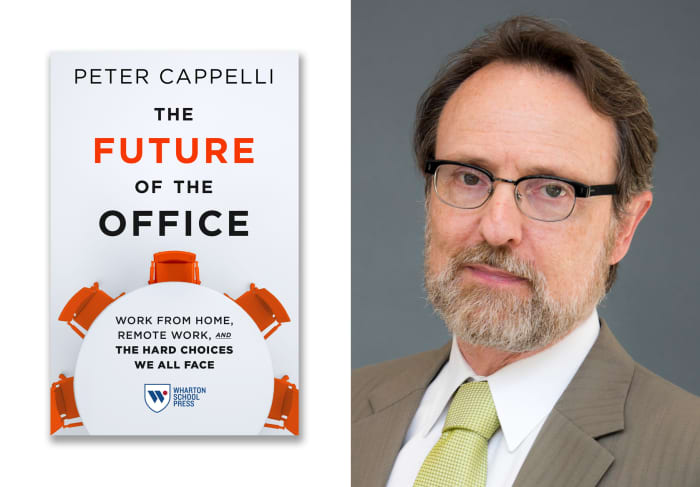This post was originally published on this site
The challenges employers are facing in finding and keeping workers now are not inexplicable, contrary to most headlines, and they certainly do not indicate any great rethinking of the value of work.
The fact that so many employers waited until business was already back from COVID slumps before beginning to rehire a workforce created a big but temporary shortfall that shifted some power back to employees.
What is prolonging the shortfall in hiring is that the typical employer is not responding to what job seekers appear to want.
Much of the reporting about the state of the labor market implies problems that are just not so. The fact that there are a lot of vacancies does not mean that they cannot be filled. Even when 14 million people lost their jobs in March 2020, there were six million vacancies. There are always people moving on, retiring and so forth, and there are vacancies because it takes time to replace them.
The panic about quitting is maybe the most misplaced concern. It is true that the current quit rate of 2.9% per month is the highest on record, but the records only go back to 2001, and the quit rate before the pandemic was 2.6%. Turnover is huge in some industries, such as restaurants, but in others, including hot markets like construction, it is essentially unchanged.
Most people who quit jobs immediately take another one, and there is no evidence at all for the assertion that people who are quitting are dropping out of work altogether.
What is new and what is unsettling the job market is that so many employers waited to fill so many jobs all at once, when pandemic restrictions began to lift in early summer. In part this is a failure of planning by employers, who laid off workers earlier and now do not have them when they want to hire. By waiting until restrictions were actually lifted and not anticipating that others would be doing the same thing at the same time, we ended up with the huge surge of hiring all at once.
“The percentage of those out of work who said they would take their old job back if it was offered declined as the pandemic went on.”
What is also new, or at least unanticipated, is that the millions of people who were out of work, many of them for a year or more, were not waiting by their phone for anyone to offer them a job. The notion that this was simply because of additional unemployment insurance checks has been debunked by several studies. They cut back their expenses, moved back in with family members, took on care giving obligations, found some gig work and so forth.
The biggest surprise is revealed in a fascinating survey by the Dallas Federal Reserve that shows that the percentage of those out of work during the pandemic who said they would take their old job back if it was offered actually declined as the pandemic went on.
My sense is that if they’ve been out of work that long, why jump at the first job opportunity? Why not wait and see what is out there now that things are picking up?

Now we start to see some behavior that is new. Surveys of those without jobs by Indeed showed that the biggest factor delaying more aggressive job hunting is the expectation that better opportunities will come. No doubt this is fed by stories about desperate employers pushing up pay quickly, even though most of those stories are about one sector: restaurants.
More interesting still is other Indeed data showing that job search is down, sharply, among people who already have jobs. (Vacancies are much more likely to be filled by people quitting one job to move to another than from the unemployed, especially for higher-level roles.)
What are they waiting for? Better pay for one thing. Despite all the talk about exploding pay rates, real wages have actually declined against inflation from last year: September 2021 wages are almost 1% lower than they were a year ago.
For white-collar workers, the big issue is flexibility about work schedules, especially working from home. Again despite the news stories about innovations at some companies, most still have a “wait and see” attitude.
A new survey by Slack shows that twice as many executives want to go back to the office as do non-executives, and the executives call the shots: two-thirds of them report that they are fashioning their work-from-home plans without input from employees. Labor Department data indicates that we are now down to about 11% of employees working remotely from more than a third at the peak of the pandemic.

Wharton School Press
In short, employee expectations are up, average employers have not responded to them yet and so we have a stalemate. My sense is that employers will continue to sit this out, even when they may be losing money because they can’t get their work done. Lost opportunities don’t show up on accounting statements used to judge businesses while higher wages and other costs do.
On work from home, while many employers still don’t trust that employees will be productive working at home, others, probably more, still can’t see how allowing employees to work from home helps them.
So we sit.
Peter Cappelli, the George W. Taylor Professor of Management at the Wharton School at the University of Pennsylvania and director of Wharton’s Center for Human Resources, is the author of “The Future of the Office: Work from Home, Remote Work, and the Hard Choices We All Face”
Also read: We’re going back to the office but workers won’t stay long unless the boss learns this No. 1 skill



